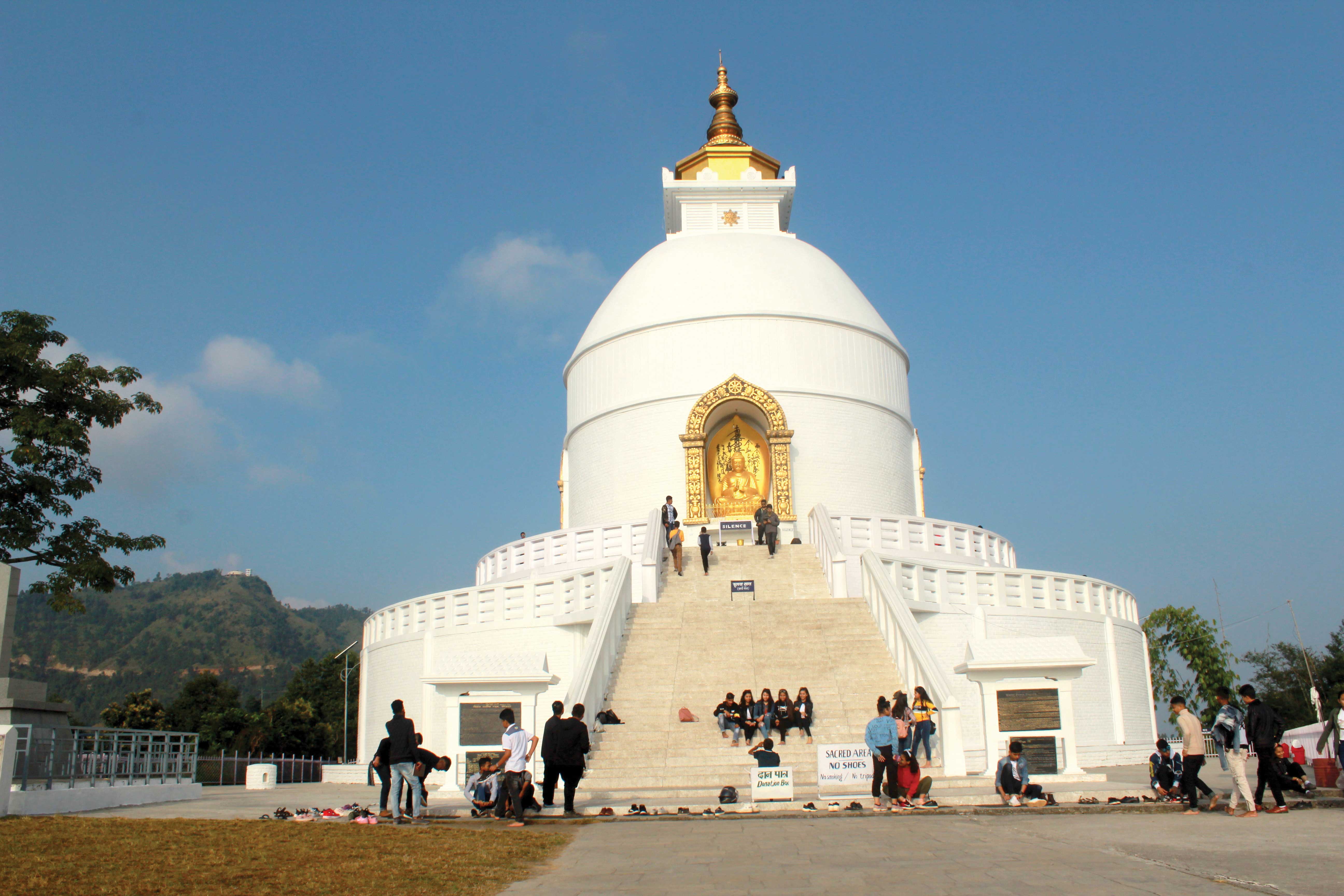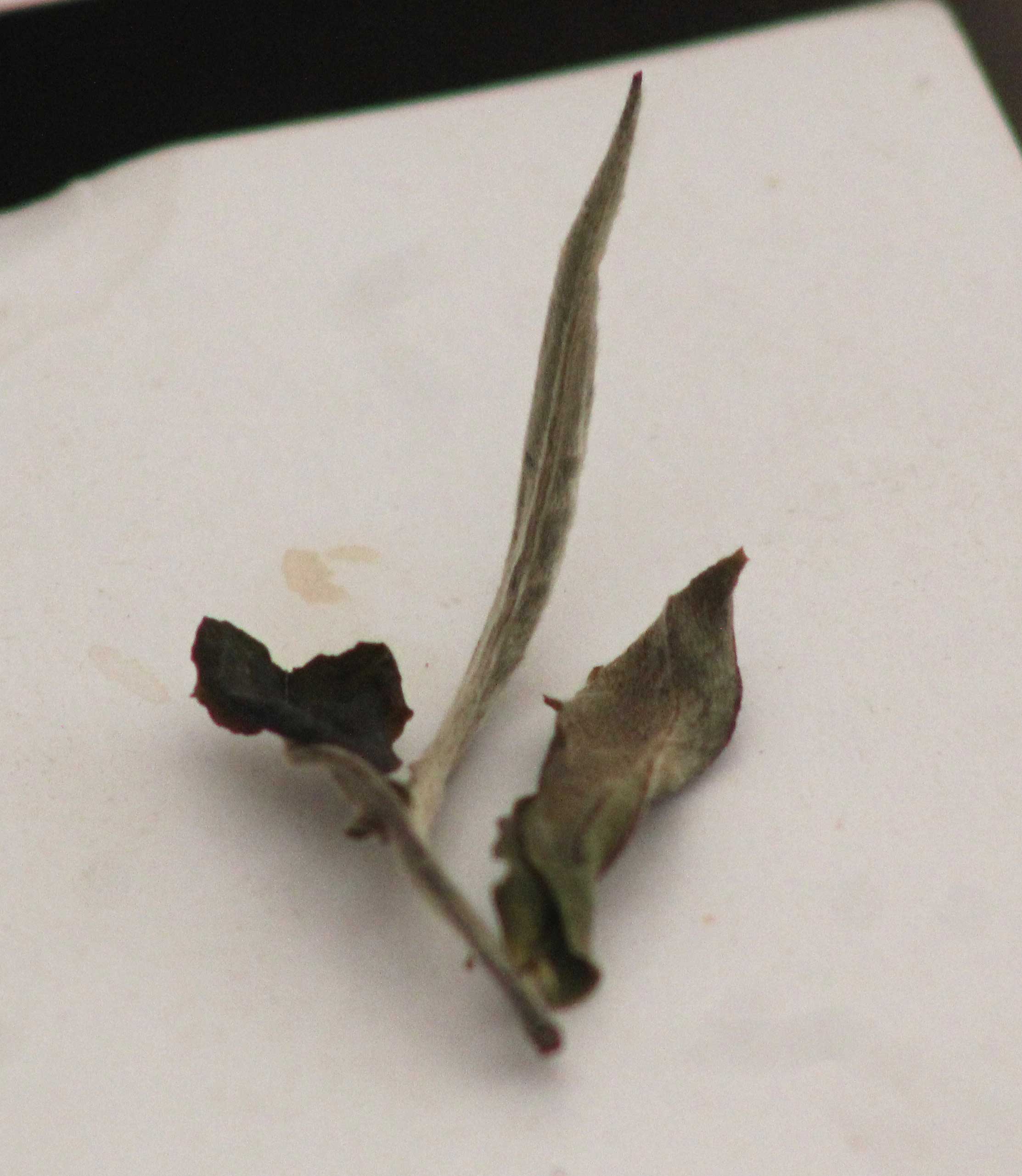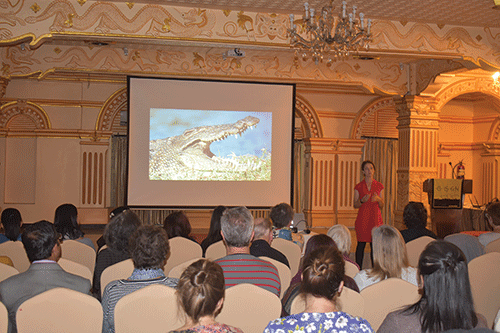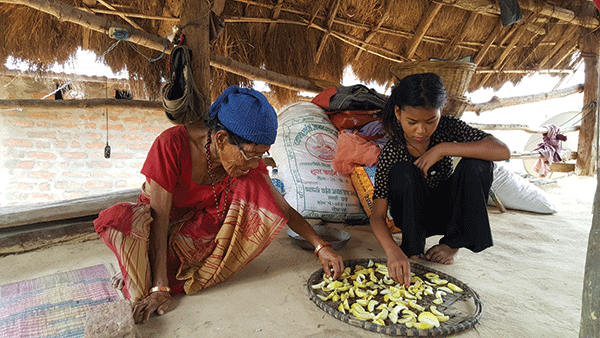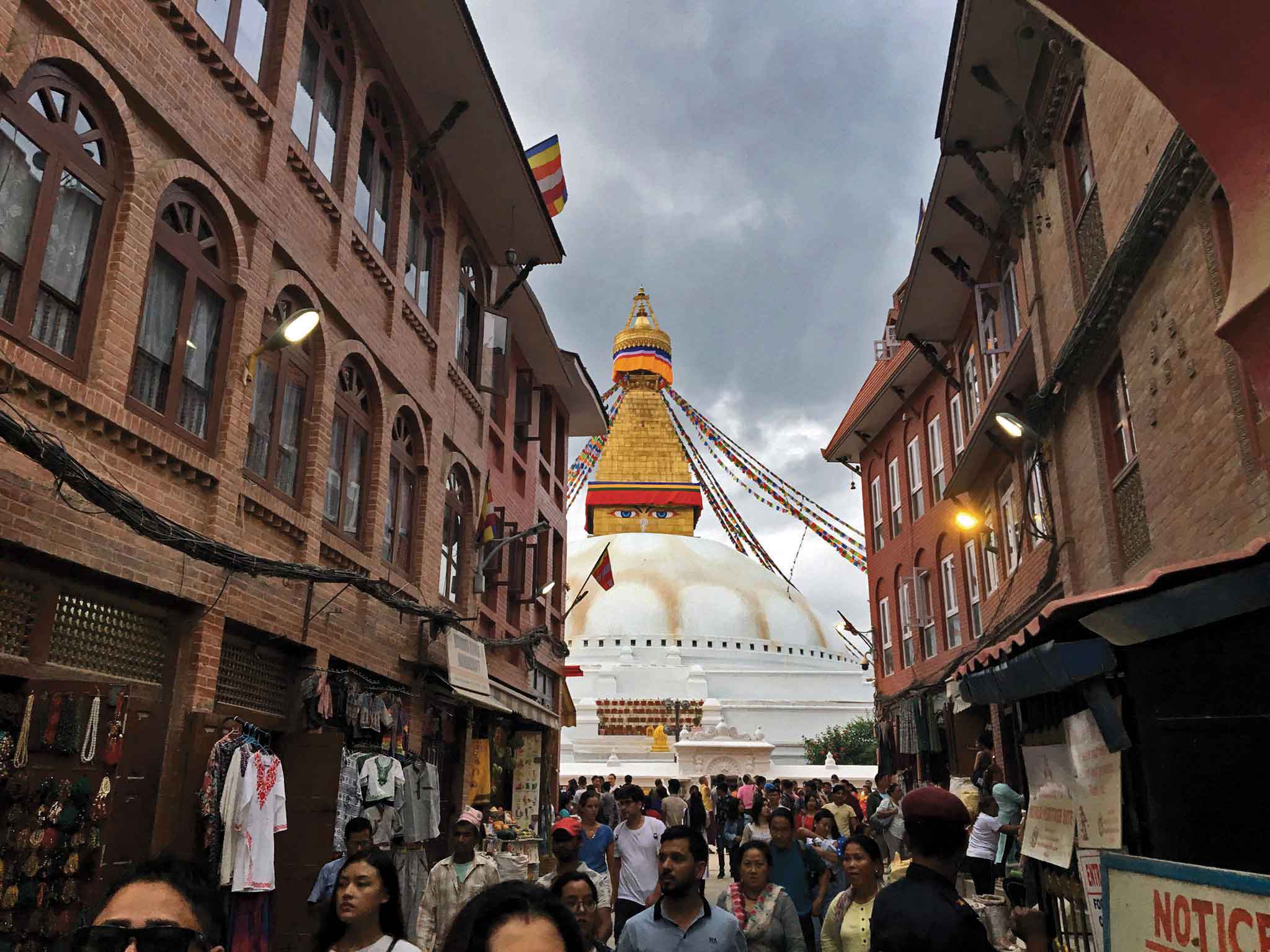The students and faculty of Lincoln School’s grade 10, spent four days (and nights) exploring and understanding Patan. The purpose of the program was to explore Patan as a means to understand historical cities in general. The exploration was organized by Crafted in Kathmandu and led by Anil Chitrakar.
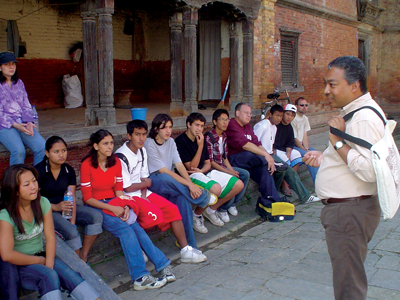 Day one saw the students with Raj Kumar Shakya trying their hand at repousse art. The idea was to work with a sheet of copper and shape it into a lotus flower. The afternoon was spent at Bhinchhe Bahal with stone craftsperson Sanu Bajracharya carving stone Buddhas. One of the students commented that next time anyone buys stone craft; he will not mull over the price! Spending the
Day one saw the students with Raj Kumar Shakya trying their hand at repousse art. The idea was to work with a sheet of copper and shape it into a lotus flower. The afternoon was spent at Bhinchhe Bahal with stone craftsperson Sanu Bajracharya carving stone Buddhas. One of the students commented that next time anyone buys stone craft; he will not mull over the price! Spending the
evenings at Patan Durbar
Square also gave everyone a first hand experience at “night-life” in a historical city.
Next morning it was off to the sacred forest of Bajrabarahi and Nag Daha to understand the link between ancient cities and the surrounding natural resources. The forest, water resource and agricultural land have nurtured these cities for ages and they are currently under pressure from rapid urbanization. Loss of Guthi land that paid for the maintenance of most of the monuments and other structures, which are part of our cultural heritage, is a concern for all. Following the course of the water into the city, the entire team then picked up brooms, shovels, brushes and washed the stone water fountain at Saugal Hiti in Patan and made it “as good as new”. Yogendra Kayastha and Prakash Amatya helped us understand the link between natural resources and the city. The purpose of the evening walk was to see the various wells and stone water spouts of Patan and to understand the community’s efforts at conservation.
The next day began with a ‘heritage walk’ to get an insight into how Patan was designed as a city with its spacious Bahals. The walk also brought to light the two thousand five hundred year history of Patan, with explanations of the various icons that are seen everywhere. The group visited the heritage of the Bagmati river bank at Sankhamul as well. The entire group then spent the morning making and painting masks, and the afternoon making drums, which are an essential part of the cultural heritage of Patan. Sanu and Chandan Chitrakar were there to give guidance, while Madan Kulu explained the drums. The evening session looked at how Patan’s economy paid for the entire wonderful heritage and how today, it is difficult to even pay for their maintenance.
The morning of the fourth day was spent visiting and learning about all the successful heritage conservation projects of Patan. The wood work, the documentation and photographic references used to preserve the temples, monasteries and private buildings were observed. Time was spent at the offices of the Kathmandu Valley Preservation Trust (KVPT) where Rohit Ranjitkar explained the principles behind heritage preservation. The team then took time out to sketch the various components of Patan’s rich architectural heritage.
The final session was spent at the Guita bahi where legend has it that there stood a nine- storied monastery. The group was divided into three teams and each one asked to develop a strategy as to how they would go about re-building this monument. The idea was to transform what they had learnt into a potential future conservation project.
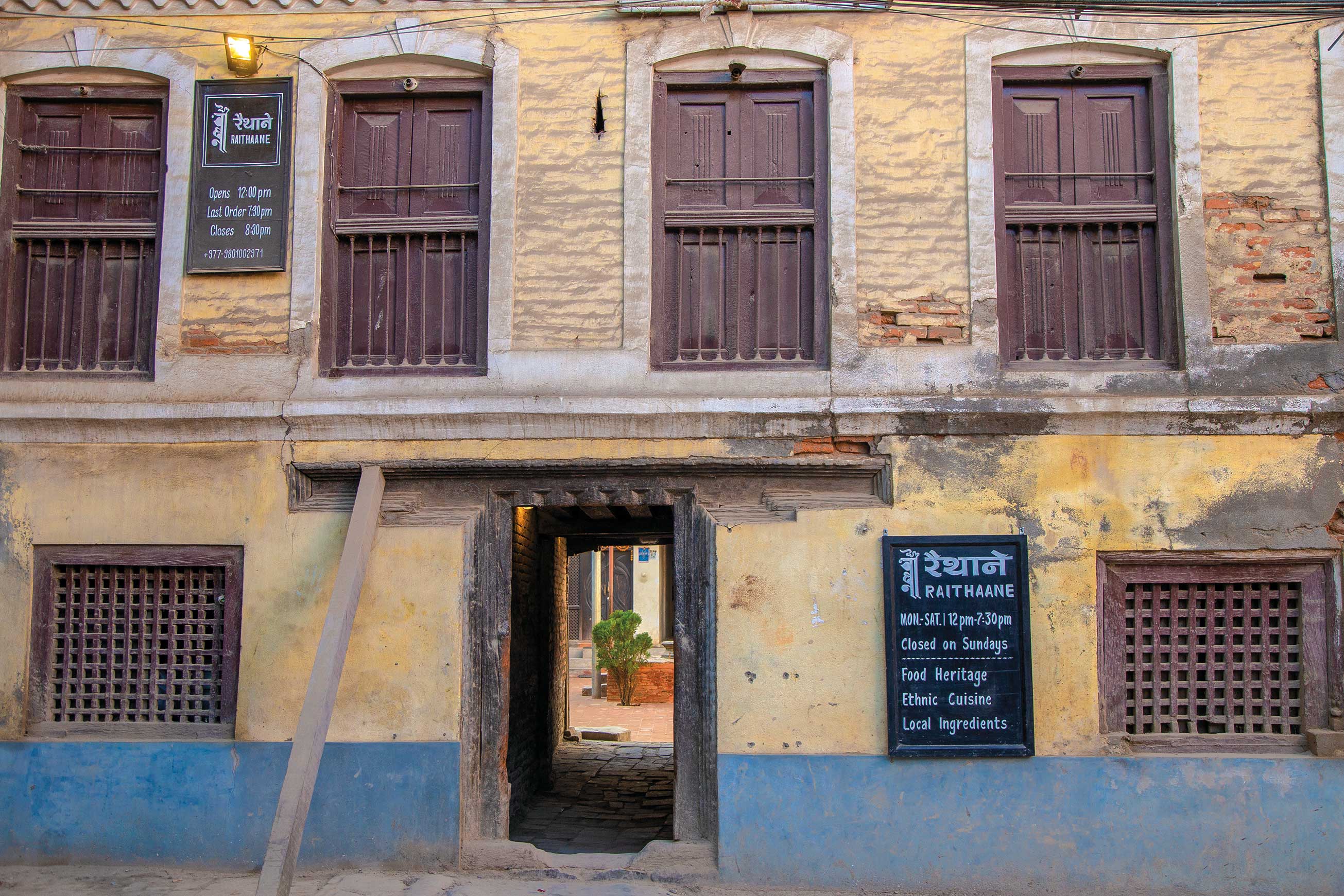
Preserving food heritage and celebrating underrepresented ingredients: the gem that is Raithaane
Raithaane was not what...


